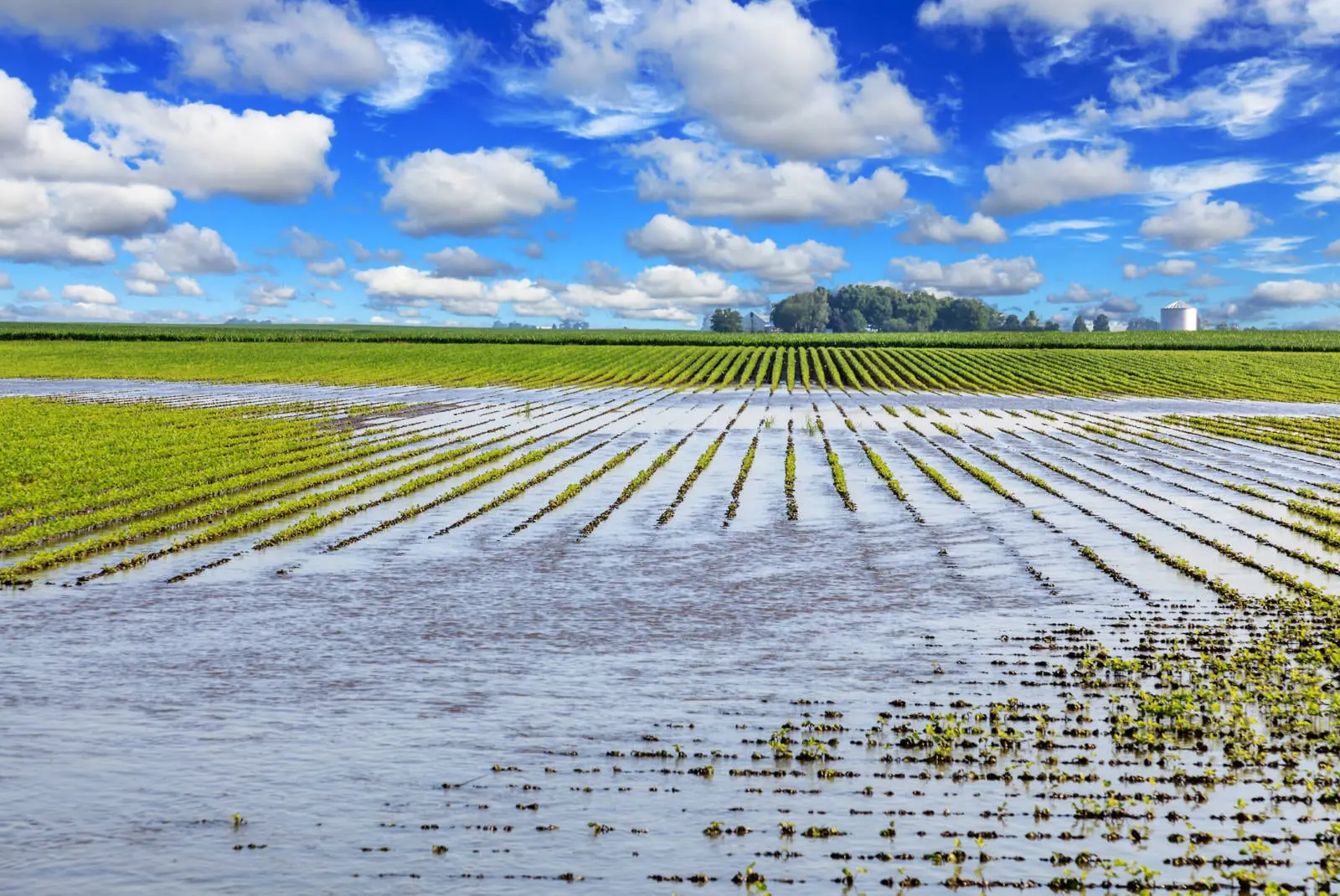 Our crops were looking fantastic. But then on July 9 a serious hailstorm went through our area of the north-central U.S., and it seriously damaged about one-third of our crops. The hail stripped the leaves from roughly 120 hectares, a few hundred acres, of soybeans; roughly 80 hectares, or a couple hundred acres, of corn, and some sugarbeets. The storm hit an area 8 km, or 5 miles, by 32 km, or 20 miles, and our home farm was in the heart of that area.
Our crops were looking fantastic. But then on July 9 a serious hailstorm went through our area of the north-central U.S., and it seriously damaged about one-third of our crops. The hail stripped the leaves from roughly 120 hectares, a few hundred acres, of soybeans; roughly 80 hectares, or a couple hundred acres, of corn, and some sugarbeets. The storm hit an area 8 km, or 5 miles, by 32 km, or 20 miles, and our home farm was in the heart of that area.
We are still waiting for our crop insurance adjuster to report the damage and let us know what we should do to move forward. The soybeans and corn both sustained 85% damage. Our adjuster will let us know what our crop insurance will cover, and then we will decide if we will salvage what we can of those crops, or if we will till those fields and take a complete loss.
 Fortunately, our fields are spread out as far as 70 km, or 45 miles, away. So the other two-thirds of our crops are still looking really good. We have had a very wet, hot July, so crops are growing well, but we have to monitor for problems.
Fortunately, our fields are spread out as far as 70 km, or 45 miles, away. So the other two-thirds of our crops are still looking really good. We have had a very wet, hot July, so crops are growing well, but we have to monitor for problems.
Our undamaged soybeans have reached the R4 or R5 growth stage, when pods are growing and seeds are starting to develop. We are scouting every 2 to 3 days for insects like aphids and thistle caterpillars. Weather conditions have also created ideal conditions for white mold, a disease, in our soybean fields. If we get another rain, some of the spores on the ground will splash onto the plants. We are watching closely to see if these pests reach economic treatment threshold levels. We will probably decide by mid-August if we are going to make an insecticide or fungicide treatment.

The hail-damaged soybeans may recover to some extent. New leaves may grow enough to support some crop development, so we are watching that crop while we wait for our crop insurance to tell us what is covered.
Our undamaged corn looks excellent, and it is pollinating.
Our undamaged sugarbeets are also doing well, and our factory is predicting a big crop. We do need drier weather to prevent soil diseases from damaging the crop. But because sugarbeets are a root crop, the hail-damaged fields will likely recover to some extent. Farmers rarely carry hail insurance for root crops. We have made 4 fungicide applications to the sugarbeets, and we will likely make 3 to 4 more. We’ve had rain just before many of those applications have needed to be made, so instead of using our sprayer, we’ve had to hire a crop duster, a small airplane, to make some of those fungicide applications.
 In our third alfalfa cutting, we had black leaf spot, which is a bacteria, and so it can’t be treated in the crop. That reduced the yield for this cutting by about 50%. Black leaf spot usually shows up in cool, wet conditions in early spring on snow-covered alfalfa. We had several experts look at it, but they couldn’t figure out why it appeared in the very hot conditions we have had. After the third cutting, we did treat our alfalfa with a fungicide and insecticide to support plant health and help it recover.
In our third alfalfa cutting, we had black leaf spot, which is a bacteria, and so it can’t be treated in the crop. That reduced the yield for this cutting by about 50%. Black leaf spot usually shows up in cool, wet conditions in early spring on snow-covered alfalfa. We had several experts look at it, but they couldn’t figure out why it appeared in the very hot conditions we have had. After the third cutting, we did treat our alfalfa with a fungicide and insecticide to support plant health and help it recover.
We expect to start harvesting our hard red spring wheat by the second week of August, and it also looks good.

Our two beehives survived the hailstorm, though one hive is much farther ahead making honeycomb than the other. The hives are near our small vineyard, where clover is planted between the rows of grape vines. That allows them to produce a very pale, sweet honey. Our neighbors also have land in conservation next to this area, so the bees have plenty of native Minnesota habitat to enjoy, as well. We are already looking forward to the honey we will likely harvest in early September.
I was also recently re-elected to serve as president of the Minnesota Soybean Growers Association. I have a much better idea of the time this role will take based on this past year, though I know it will look a bit different because COVID-19 will likely reduce in-person meetings. However, we will still be paying close attention to issues that will support soybean farmers.
Although we experienced the risks of farming as we recover from the hail, we are thankful our risk was spread out. Farming over a distance takes more time, but it also helps us weather storms – literally.

